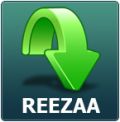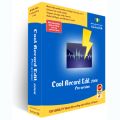Ctrl+Alt+Del. It is also known as the "three-fingered salute," since it is so useful when your Windows computer locks up. Pressing the combo once (simultaneously) opens the Windows Task Manager. From the Task Manager you can select the crashed program separately and close it. If your system is totally locked, grab the mouse and click Shut Down.
Have you ever wondered why almost every windows program has the F in File underlined, E in edit and so on across the top of the window? Press the Alt key + that letter to open a particular menu; you can either use arrow keys to move around within that window. Now your eyes will be glued to more underlined letters to use more Alt key combinations.
F2 renames a selected file or folder easier than right clicking.
F3 launches search if you're on the desktop or in a folder.
Windows + M minimize all open windows.
Windows + D shows you're desktop.
To move the current window or dialog box to a different position on the screen press Shift+Alt+Spacebar then press M. Move the window or dialog box using the up/down/left/right arrows then press ENTER.
To resize the Current window press Shift+Alt+Spacebar then press S. Move the window using two of the up/down/left/right arrows then press ENTER.
To reduce (not minimize) the current window press Shift+Alt+Spacebar then press R.
To maximize the current window use Shift+Alt+Spacebar then press X.
To restore an active window press Alt+Spacebar+R
To minimize the current window use Shift+Alt+Spacebar then press N.
To activate the font list box in the formatting toolbar press Ctrl+Shift+F.
To switch between multiple documents which are open in the same program press Alt+W. To pull down the window menu, type the number corresponding to the document you want to switch to. Or press Ctrl+F6.
To open multiple documents in the same program press Alt+F to pull down the file menu. Type the number corresponding to the document you want to switch to or press Alt+F to pull down the menu. Press O to open the open dialog box. Press Ctrl+Tab to move through the buttons and fields until you reach the document list. Use your down arrow keys to move to the document you wish to open. Press Enter.
To close an active document or dialog box press Alt+F to pull down the file menu. Press C to close the document. You may be asked "Do you want to save changes to the document?" Use your Tab or arrow keys to move to your selection. Press Enter.
To close multiple documents in the same program press Alt+C.
To turn on spell checker move to the beginning of your document or select the text you want spell checked and press F7. Use the Tab key to move around the dialog box. Press Enter on ignore or change buttons.
To display a drop down menu for a selected item, position the cursor over the item and press Shift+F10. Or select the item or text and press Shift+F10.













